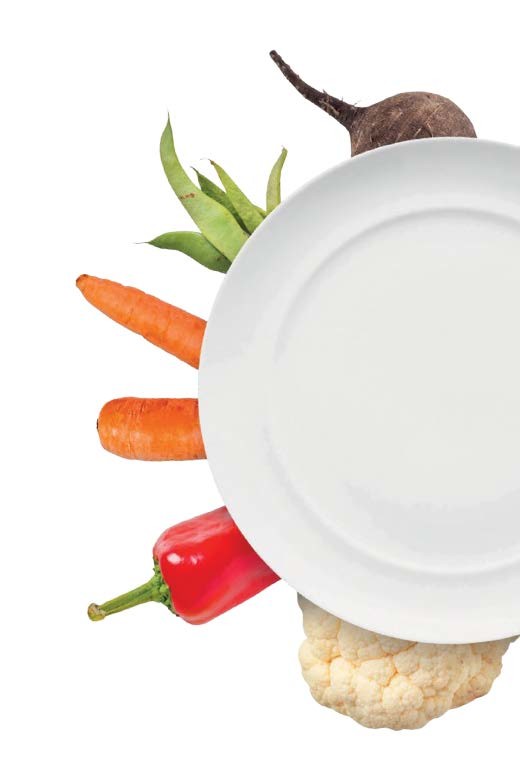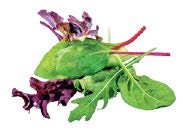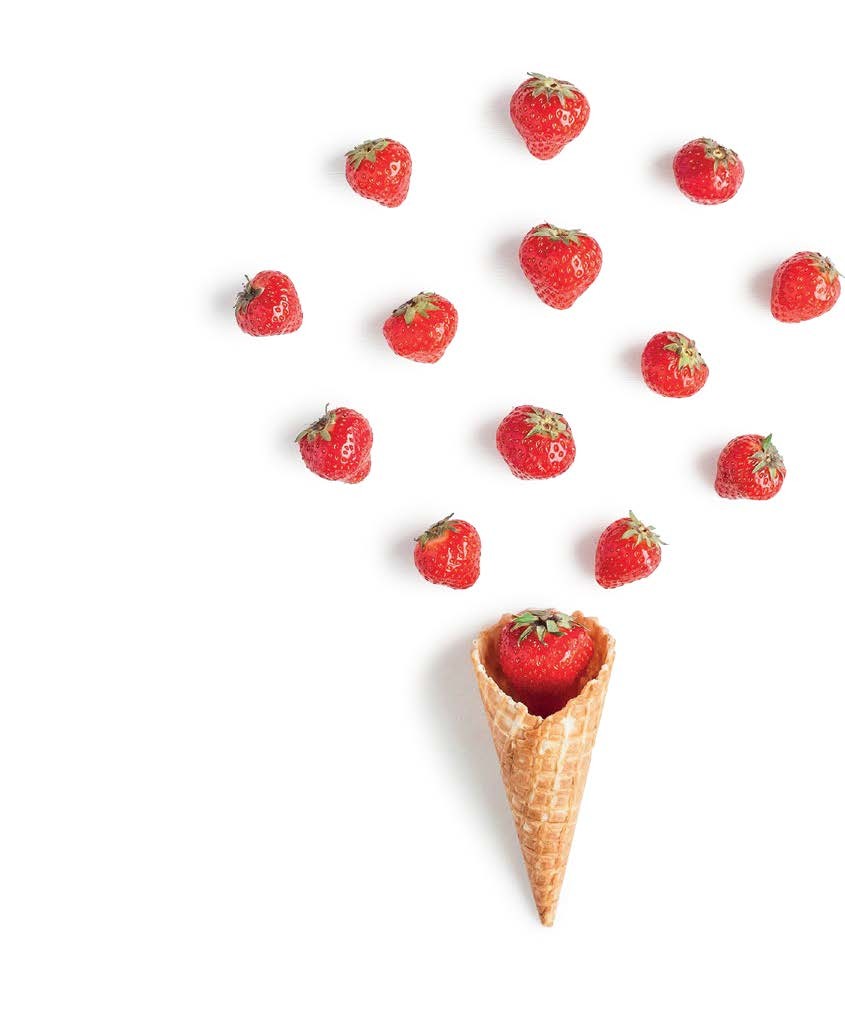We are what we eat. American doctor and author Dr Michael Greger tells us that these 12 foods could be the key to living well for longer.


We are what we eat. American doctor and author Dr Michael Greger tells us that these 12 foods could be the key to living well for longer.
Poor diet is the leading cause of disease, premature ageing and lower health expectancy. American doctor and author Dr Michael Greger has used this fact, proven through countless studies, to devise a special dietary regimen he wrote about in his book How Not to Die, which became a mega hit in the US. Here, Dr Greger explains how we can easily – and pleasurably – gain many healthy years of life through “Daily Dozen”.
My book, How Not to Die, was inspired by my grandmother. At the age of 65, she was told her life was over. Her doctors sent her home to die in a wheelchair. But shortly after being discharged from the hospital, she watched a 60-minute episode on Nathan Pritikin, a pioneer in reversing heart disease through a plant-based diet. My grandmother flew to the Pritikin Longevity Centre in California to find out whether his programme could perhaps help her. She wheeled herself in in her wheelchair and walked out healthily on her two feet. She managed to live another 31 years beyond what she had been given – and enjoyed life with her six grandchildren, myself included.
Plant Power
My grandmother’s recovery from the final stages of heart disease, achieved by changing her diet, promoted my direction in life: I wanted to become a doctor, specialising in nutrition. Dr Dean Ornish, a clinical professor of medicine at the University of California in San Francisco, was the first to prove that a plant-based diet and other healthy lifestyle changes could reverse heart disease. In 2014, Dr Caldwell Esselstyn Jr published a study of almost 200 patients with serious forms of heart disease. He instructed his patients to eat a wholesome, plant-based diet. Those who followed the diet plan saw a low rate of subsequent cardiovascular events after the study. It became clear that the main cause of death and disability in the Western world is our diet. Many deaths are preventable and relate to what we eat. But the only physician who asked me about dietary habits was our vet.
The Daily Dozen
Dr Greger’s Daily Dozen makes living healthily a habit, with 11 foods (and exercise) we should incorporate into our daily routine. Over the next few pages, we describe the daily dozen in more detail and explain why it’s crucial for all.
Wholegrains: 3 portions
Cruciferous vegetables (cauliflower, broccoli, etc.): 1 portion
Legumes: 3 portions
Berries: 1 portion
Herbs and spices: 1 portion
Drinks: 4 portions
Other fruit: 3 portions
Dark green leafy vegetables (spinach, kale, lettuce, etc.): 2 portions
Nuts and seeds: 1 portion
Linseed: 1 portion
Other vegetables: 2 portions
Exercise: Once a day

1. WHOLEGRAINS
Despite claims to the contrary by many nutrition experts, Dr Greger says that wholegrain bread and pasta really are good for us! Three portions of wholegrains or pseudocereals like quinoa a day, including wholegrain bread and pasta, can help reduce the risk of illnesses, such as heart disease, type 2 diabetes and strokes.
Dr Greger’s favourite varieties: Barley, brown rice, buckwheat, millet, oats, quinoa, wholegrain pasta, teff, rye.
How much? 3 servings a day.
What does that look like? For example, 100 g of oat flakes, rice or pasta; 1 slice of wholegrain bread or wrap; or 30 g of fat-free popcorn. “A wholegrain pasta dish can sometimes equal nearly six servings from the daily dozen,” says Dr Greger.

2. CRUCIFEROUS VEGETABLES
Crucifers like Brussels sprouts, broccoli and cauliflower have sulforaphane, which helps keep the brain and eyes healthy, and can potentially combat cancer. While the best way to avoid lung cancer is to not smoke,, US researchers found that women who ate more than five servings of cruciferous vegetables per week had a lower risk of lung cancer. Sulforaphane has also been stated by scientific journals to prevent or treat breast cancer, as it acts against the metabolic changes in oestrogen. Children, too, are less likely to develop asthma if they ate one to two cups of lightly steamed cruciferous vegetables.
The enzyme sulforaphane is only produced if we chew or chop up raw cruciferous vegetables – cooking them destroys the substance that gives rise to the enzyme. Dr Greger says the trick to not having to eat these vegetables raw is to cut them up into small pieces and leave to sit for 40 minutes, by which the sulforaphane will have been produced.
Dr Greger’s favourite varieties: Broccoli, Brussels sprouts, cabbage, horseradish, kale, cauliflower, rocket, bok choy and watercress.
How much? 1 serving a day.
What does that look like? 60 to 80 g of chopped vegetables, 40 g of broccoli, etc.

3. LEGUMES
Legumes are an excellent source of protein. They also contain nutrients said to help prevent cancer. Beans are jam-packed with dietary fibres, folates and phytates that can help reduce the risk of stroke, depression and bowel cancer. Studies on diet and cancer have found that diets rich in whole grains and/or legumes can potentially help prevent cancer.
Dr Greger’s favourite varieties: Black beans, black-eyed peas, lima beans, chickpeas, edamame, kidney beans, lentils, peas and soybeans, and soy products like tofu and tempeh.
How much? 3 servings a day.
What does that look like? One serve of legumes would be 30 g hummus; 60 g boiled beans, split peas, lentils, tofu or tempeh; or 120 g fresh peas or sprouted lentils.

4. BERRIES
A study conducted by the American Cancer Society of almost 100,000 women found that those who ate at least three servings of strawberries or blueberries a week had fewer heart attacks. Just one serve of berries a day can also help strengthen the immune system, while antioxidants prevent inflammation. The substance zeaxanthin found in goji berries prevents macular degeneration.
Dr Greger’s favourite varieties: Acai, barberries, blueberries, blackberries, grapes, cranberries, goji berries, raspberries, strawberries and mulberries.
How much? 1 serving a day.
What does that look like? No need to be more than 60 g fresh or frozen berries or 40 g dried berries in muesli, or smoothies, on a wholegrain pancake, or in a cake.

Time for Change
Many people think the way we die is genetically pre-determined. However, research has found that genetic factors aren’t the major causes of chronic diseases. Most visits to doctors are for illnesses resulting from our lifestyle. So how does changing our diet have a bearing on disease? Research has shown that long-term vegetarians, who reported ate no meat over a 17-year study period, added an extra 3.6 years to their life expectancy.
However, vegetarians can also suffer from high disease rates if they eat lots of processed products. Take India, for example. The rate of diabetes, heart disease, obesity and stroke has risen faster than expected for a country which has recorded very little increase in meat consumption per capita. This is due to the reduced amount of whole foods in diets and increased consumption of refined carbs and fast food, instead of lentils, fruit, vegetables, whole grains, nuts and seeds that were traditionally eaten. The dividing line between health-promoting and health-harming foods is less a case of plant versus animal products, and more about whole foods versus the rest.

5. HERBS AND SPICES
Turmeric is a must every day! Its active ingredient curcumin can speed up post-surgery recovery. It can help treat rheumatoid arthritis, while a 2002 study found that curcumin may help protect the skin during radiation therapy for cancer. Curcumin is also being explored as a way to prevent or treat cancer, and lung and brain diseases. To maximise the absorption of turmeric – particularly the curcumin – it should always be eaten with black pepper. Curry in itself is a spice mix, and has turmeric, coriander, cumin and chilli peppers.
In terms of other herbs and spices, the pungent component in chilli and cayenne pepper is showing promise for combating cluster headaches. Meanwhile, ginger may help combat nausea and menstrual pain.
Dr Greger’s favourite varieties: Primarily turmeric, along with basil, cardamom, chilli, cinnamon, coriander, cumin, curry powder, marjoram, thyme, etc.
How much? ¼ tsp turmeric a day (combined with ¼ tsp black pepper), and any quantity of other unsalted spices and herbs.
What does it look like? Herbs can be fresh or dry, or frozen, and used in any way.

The pigments in red and yellow vegetables help to combat sun-related wrinkles
The Cost Of Health
Scientists from Harvard University found that to get more nutrition for their money, people should buy more nuts, beans, and soy and wholegrain products, and fewer meat and dairy products. An average serve of vegetables can be up to four times more expensive than an average serve of junk food, but these vegetables are up to 24 times more nutritious.
Based on a comparison between cost and nutritional value, the nutritional value supplied by vegetables is six times higher per dollar than heavily processed foods. Meat costs around three times as much as vegetables, but, in terms of total nutrients, has a nutritional value 16 times lower. If you want to eat as many nutrients as you can as cheaply as possible, the produce section is where you need to be. Spending just 50 cents more a day on fruit and vegetables can reduce your mortality risk by 10 percent. What a bargain!

6 DRINKS
Dr Greger recommends drinking five glasses of water a day – whether that be plain tap water, or flavoured with slices of fruits, tea leaves or herbs. Being adequately hydrated can improve your mood and mental clarity, and also help reduce your risk of heart disease, bladder cancer and other diseases.
Dr Greger’s favourite varieties: Water, coffee, hot chocolate, or herbal, green or white tea.
How much? At least 5 x 350 ml glasses a day (sugary soft drinks don’t count).

7. OTHER FRUIT
Eat a selection of different fruit with each meal, so you can continually supply your body with antioxidants and polyphenols, thereby helping to prevent inflammation, strokes, lung complaints and age-related illnesses, such as Alzheimer’s. According to the Alzheimer’s Disease Association, dementia affects one in 10 people aged above 60 in Singapore today.
Dr Greger’s favourite varieties: Apples, dried apricots, avocados, bananas, clementine mandarins, melons, dates, dried figs, kiwifruit, mangoes, oranges, plums, apricots, pomegranates, pears, etc.
How much? 3 servings a day.
What does that look like? One serve is approximately equal to a medium-sized breakfast, 120 g of cut, fresh fruit, or 40 g of dried fruit. It’s worth noting that there are more nutrients in whole pieces of fruit, compared to fruit juice.

8. DARK GREEN LEAFY VEGETABLES
Dark green leafy vegetables top the list when it comes to the most nutrients per calorie. Also, of all the food groups researched by a team of Harvard scientists, green leafy vegetables, such as lettuce, spinach, Swiss chard (silverbeet) and mustard greens, were most strongly associated with a decreased risk of cardiovascular disease.
Dr Greger’s favourite varieties: Spinach, lettuce, kale, rocket, etc.
How much? 2 servings a day.
What does that look like? 60 g raw or 90 g cooked – e.g. a handful of rocket on pasta or pizza, a green salad, or a serving of spinach with dinner.

Daily Habits
A wholesome, plant-based diet is pretty self-explanatory. But aren’t some green foods better than others? It’s possible, for instance, to eat nothing but potatoes for an extended period. By definition, that too is a wholesome, plant-based diet – it’s just not a healthy one. The more I researched over the last few years, the more I found that foods cannot necessarily substitute one another. Some foods and food groups contain particular nutrients that do not exist in such quantities elsewhere – and that is the “Daily Dozen”.
For example, sulforaphane is almost exclusively found in cruciferous vegetables and cabbages. You could eat large amounts of other vegetables every day and still not get any significant amount of sulforaphane. The same principle applies to linseed and its cancer-fighting lignans.
The Daily Dozen checklist can look like an exhaustive list to tick off, but it’s actually quite easy to check off several boxes all at once. Imagine eating a large salad: Two cups of spinach, a handful of rocket, a handful of roasted walnuts, half a cup of chickpeas, half a cup of red capsicum, and one small tomato. That’s seven ticks in a single dish. If you sprinkle ground linseed and goji berries on top, drink a glass of water with it, and eat fruit as dessert, you have almost half the ticks for the whole day covered in a single meal. With that, I hope the Daily Dozen reminds you to eat the most diverse mix of the healthiest foods every day.
Two extra years is the amount of time we add to our life by eating a handful of nuts on five or more days a week
– Dr Greger

9. NUTS AND SEEDS
Nuts can help burn more fat by stimulating metabolism. Nuts and seeds are also a source of precious omega-3 and omega-6 fatty acids, which have been shown to lower cholesterol. They also have dietary fibre, vitamin E, magnesium and other components that could benefit your heart.
Dr Greger’s favourite varieties: Almonds, Brazil nuts, cashews, chia seeds, hazelnuts, hempseed, macadamias, pecans, pistachios (unsalted), pumpkin seeds, sunflower seeds, sesame seeds and walnuts.
How much? 1 serving a day.
What does that look like? 30 g nuts or seeds, or 2 tbsps nut butter or spread.

10. LINSEED
Linseed (aka flaxseed) is full of omega-3 fatty acids and lignans. These are phytoestrogens that may lessen the effect of the body’s own oestrogen, and reduce the risk of breast cancer, which according to the Ministry of Health, and Health Promotion Board, is the top cancer for women in Singapore. Studies have also found ground linseed to be effective at reducing blood pressure in those with hypertension.
Dr Greger’s favourite varieties: Golden or brown linseed.
How much? 1 serving a day.
What does that look like? 1 tbsp of ground linseed – nothing could be easier to incorporate into a meal!

11. OTHER VEGETABLES
Deep down, everyone knows that the more vegetables you eat, the better – but why? There’s unfortunately not enough space to list all the reasons here. What we can say is that vegetables are brilliant protectors against cancer. The beta-carotene and lycopene pigments in red and yellow vegetables also help to combat sun-related wrinkles.
Dr Greger’s favourite varieties: Artichokes, beetroot, capsicum, carrots, corn, garlic, sweet potatoes, mushrooms, onions, etc.
How much? 2 servings a day.
What does that look like? 60 g raw leafy vegetables, 50 g raw or cooked vegetables, 125 g vegetable juice, or 7 g dried mushrooms per serve – at least half your plate should be filled with vegetables.

12. EXERCISE
Strictly speaking, exercise is not something to put on your plate – but it definitely nourishes your body, so it is still part of the Daily Dozen. Regular exercise has been proven to improve mood and sleep quality, and prevent cognitive decline. But that doesn’t mean we have to train to be Olympic athletes.
How much? We should strive for 90 mins a day of moderate training or 40 mins of intensive training.
What does that look like? For moderate training, activities like cycling, yoga, dancing, walking, hiking, housework or recreational swimming. For intensive training, activities like running, weight training, climbing, tennis, aerobics, swimming or football.
PHOTOS: 123RF.COM























